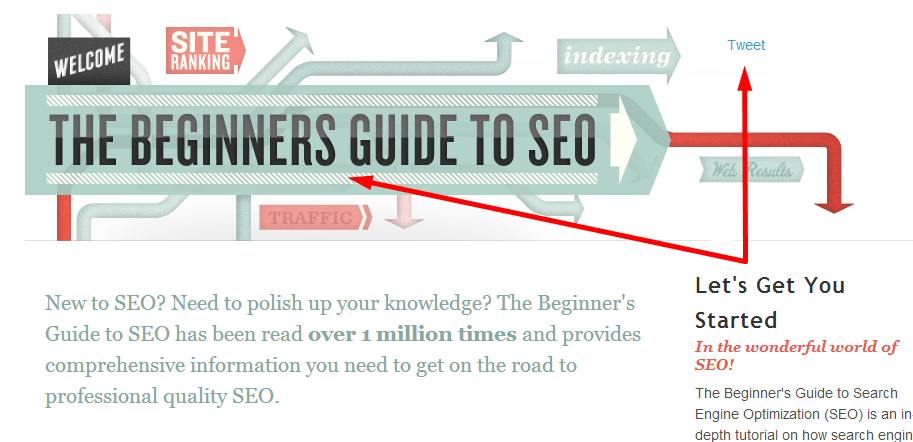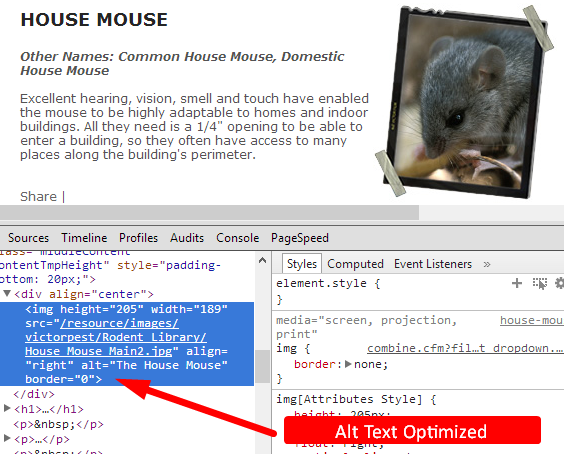Traditionally, SEO techniques are commonly associated with textual content as the driving force behind engaging an audience and generating site traffic. However, photo blogging has taken the market to a new level, powering search results through images.
While often overlooked, images can provide an equal ranking in search engine result pages (SERPs), serve effectively in organic searches and assist in trafficking. From an SEO perspective, try to consider incorporating images as similar to managing a small website.
Influential Images
One of the most important goals of SEO is to target and engage a certain niche or audience. Therefore, when choosing an image, make sure that it is compelling, and that it will help you stand out as a photo blogger. While aiming for that particular niche, you can still maintain a healthy balance by covering a large range of content to get a feel for what works for your targeted audience.
Simply stated, know your readers and find an appropriate image that can add depth to your content. By choosing the perfect visual content, you will entertain readers who will in turn share your image, promoting successful backlinking. Hopefully, you can then generate frequent traffic and a loyal reader base.
When choosing an image, always be mindful that the photo matches your content. That way, this simple alignment will show relevance and will not be flagged as spam by search engine bots.
Here is an example from the popular site, Moz:

In this example we’re extremely motivated to follow the instructions because of the starting image. Think of this as an anchor point, in which organic visitors are hoping to learn about SEO. When greeted with this, they are reassured they came to the right place – they can even tweet it!
Also, be thoughtful about the images you choose and always make sure you have permission to use that image. When incorporating Google images or other photos from sites like Flickr or iStockPhoto, be careful of licensing. Make sure your image has been purchased or you have the rights to it through Creative Common licensing.
Otherwise, as a general rule, don't post the image, as others reserve the right to take legal action if you did not seek permission.
Relevant Keywords
Developing effective keywords is one of the most crucial aspects of using photo blogging for SEO. Creating a powerful keyword that matches the images can make or break your efforts.
The lifeblood of a successful eCommerce site – or any site for that matter, heavily relies on proper site architecture. This includes optimizing keywords for images on YOUR site – not just for search engines. For example, consider the New Mustang section on the popular CJ Pony Parts website:

This correlates meaning to both users and search bots. The image alt text is of course, the same keyword. So the main takeaway is that images can be literal representations of your target keywords. The image itself can include the keyword, which helps users classify your site.
Always make sure your keyword describes the image and meets the needs of your search engine users. This is easy for concrete images like people or places. However, when faced with the challenge of something more abstract, try to think "outside of the box" and research how to effectively communicate your image through a strong keyword.
Ultimately, make sure your keywords are rich file names that will help your image and content demonstrate connectivity and relevance. Maintain a single folder and store all of your images there for your site.
Descriptive Alt Tags
The original method for showing images through "alt" and "title" tags when utilizing HTML now serves a greater purpose to effectively communicate with search engines. These tags will be beneficial in determining what the image is really about.
For example, if we’re describing or profiling an item, it’s good to be redundant with alt text:

In this example from VictorPest, we notice something rather impressive. The classification of the source compliments not only the alt text, but the entire page description. Since it’s a classification system, this is a natural thing to do!
Incorporate both tags complete with rich keywords to every image you upload. This will assist users and robots who rely on your descriptions to determine photo and site rankings. Just make sure that the content of your tag is relevant to your image. Then, your content and image will be great tools to use for navigation.
Advantageous Anchoring
As with developing effective keywords and tags, always use your choice keywords to link an image to anchor your content and assist in backlinking. Through this careful attention, you can boost your ranking and demonstrate your content's importance through descriptive text.
As a result, you can manage, analyze, categorize and weigh your photos in rankings through links and visual content. By incorporating these individual keywords, you ensure that your SEO efforts provide clear navigation and further promote your content.
Friendly File Name Conversions
To avoid keyword stuffing, focus on simple naming conversions that are added to your images. One of the best methods to achieving concise yet descriptive names is to include a dash ("-") when renaming your image. Keep your names relevant and clear to avoid lengthy redundancy.
For example, if your image depicts a large black bear, your name could be "large-black-bear.jpg." Focus on simplistic naming to assist search engine spiders so they have less trouble understanding your image. Since they search for the properties and visual mark-up of an image, careful naming conversions will assist you with your SEO.
Also Take a Look at the infographic
Also Take a Look at the infographic
On page SEO guide: The best Tips from the Pros
 |
| by : backlinko.com/on-page-seo |
The Results
As always, the ultimate goal of SEO is to continuously improve your practices to remain up-to-date on new, evolving trends on the web, especially when it comes to the shift from text to photo blogging. By incorporating these tips, you can stand out as a blogger, generate traffic and promote your rankings.
image by: ozwebim.com.au
